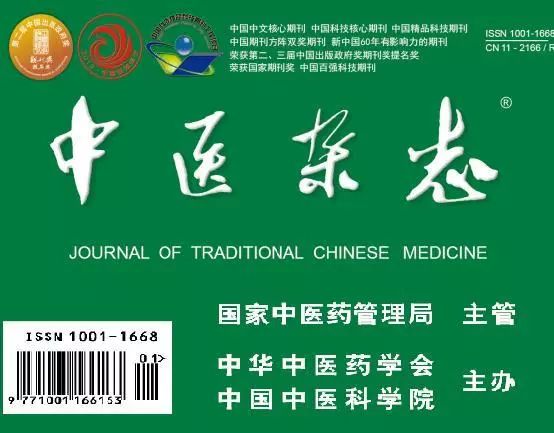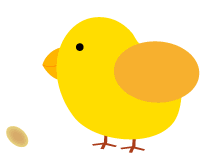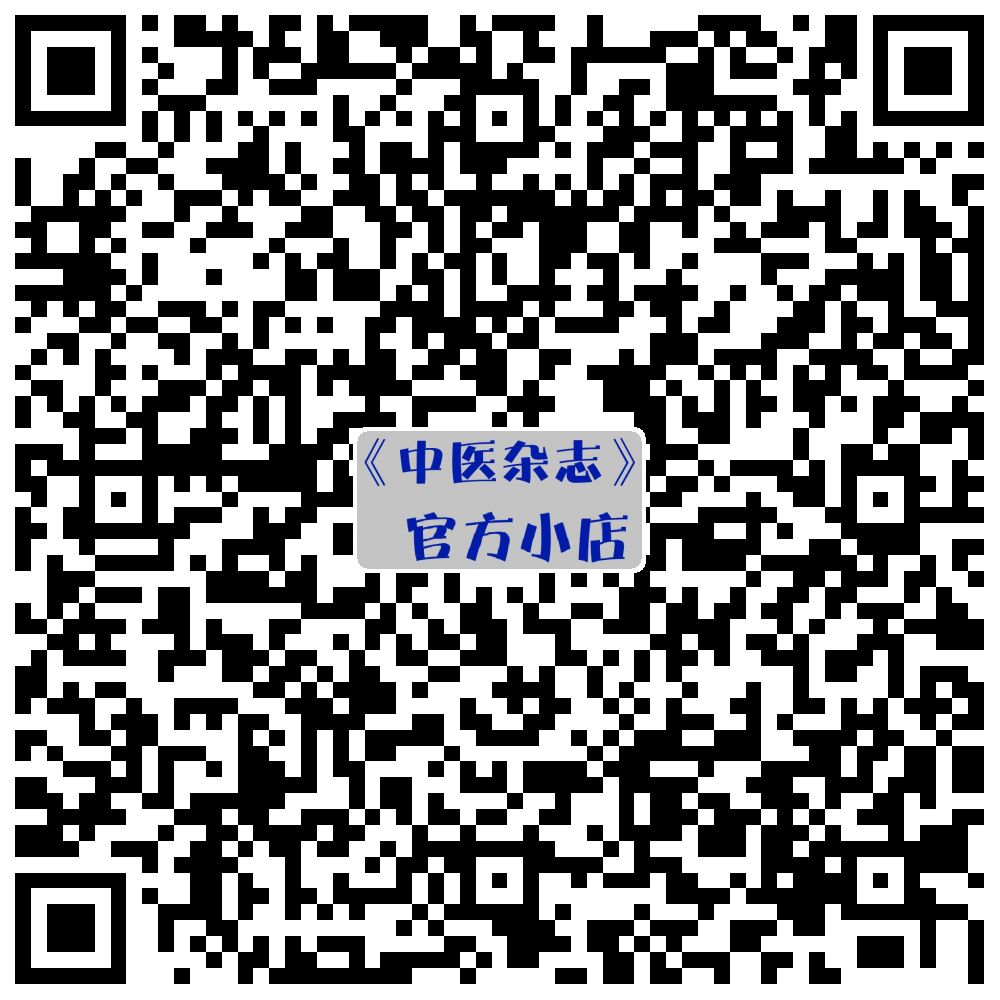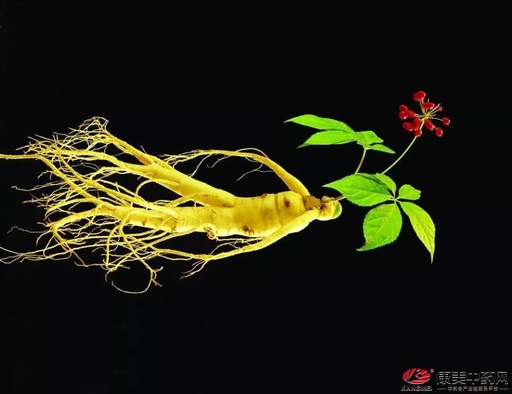
Journal of Traditional Chinese Medicine
Public Account ID: zyzzgzh
Follow

Ginseng (Ren Shen) can tonify the five organs and benefit the vital energy (Yuan Qi). During the progression of external pathogenic diseases, the strength of the righteous qi plays a crucial role; when the righteous qi is strong, the disease tends to recover, while a weak righteous qi leads to deeper illness. The use of ginseng to tonify the righteous qi can promote recovery from disease. Appropriately combining ginseng at different stages of external pathogenic diseases can support the righteous qi, expel pathogens, prevent transmission, restore vital energy, and stabilize the spirit.
1
Supporting the Righteous Qi and Expelling Pathogens
01
Classical Formulas Using Ginseng
Ginseng tonifies the five organs and benefits the vital energy, used in exterior-releasing formulas to assist the righteous qi in dispersing pathogens, and can prevent the depletion of qi and injury to body fluids after sweating. Zhang Zhongjing used ginseng in several formulas in the “Treatise on Febrile Diseases” to treat external pathogenic diseases, such as Bai Hu Jia Ren Shen Tang (White Tiger Decoction with Ginseng). Bai Hu Tang clears heat from the lungs and stomach, but at this time, the heat is severe and has damaged body fluids, thus ginseng is added to benefit qi and generate fluids, supporting the righteous qi to resist pathogens. The formula states in the “Treatise on Febrile Diseases” that: “The use of Bai Hu is to resolve both exterior and interior heat, and adding ginseng moistens dryness and alleviates thirst.”
Ke Yunbo in “Shang Han Lai Su Ji” believes, “Adding ginseng to tonify the middle and benefit qi and generate fluids, harmonizing with licorice and polished rice to tonify, while counteracting the cold of gypsum and Anemarrhena, draining fire without harming the earth, is a comprehensive technique.” Wang Zijie in “Jiang Xue Yuan Gu Fang Xuan Zhu” states: “In Yangming heat disease transforming into dryness, why use Bai Hu Jia Ren Shen? Gypsum is cold and can only disperse exterior heat, Anemarrhena is sweet and bitter and can only drain interior heat, licorice and polished rice can only carry the medicine to the middle burner. If the stomach channel heat has long harmed qi, and qi deficiency cannot generate fluids, ginseng must nourish the righteous qi and restore fluids, then Bai Hu Tang can clear and transform dryness.” This illustrates the clever use of ginseng in Bai Hu Jia Ren Shen Tang to expel pathogens without harming the righteous qi. Similarly, the use of ginseng in Gui Zhi Ren Shen Tang follows this principle.
02
Modern Formulas Using Ginseng
In modern formulas, ginseng is often used to support the righteous qi and promote the expulsion of pathogens. For example, in the “Tai Ping Hui Min He Ji Ju Fang”, Ren Shen Bai Du San (Ginseng and Bai Du Powder) functions to benefit qi, release the exterior, and disperse wind, cold, and dampness. In this formula, ginseng is an adjunct herb; although the dosage is small, it carries deep significance: firstly, it assists the righteous qi to drive out pathogens, and secondly, it provides support without depleting the host. This formula was originally designed for children, as their vital energy is not fully developed, hence a small amount of ginseng is used to supplement their vital energy and support the righteous qi to expel pathogens.
Traditional Chinese Medicine emphasizes the importance of tonifying qi and supporting the righteous qi when treating external pathogenic diseases. As stated in “Yu Yi Cao”: “When a person is affected by external pathogens, they must first be driven out by sweating. Only those with abundant vital energy can expel external pathogens effectively. If a person has weak vital energy, even if the medicine is applied externally, the qi will be depleted internally; in mild cases, it may only partially expel, lingering and causing distress, while in severe cases, the qi may contract inward, leading to persistent fever… Therefore, for weak bodies, ginseng should be used in doses of three, five, or seven parts in exterior-releasing medicines to assist the expulsion of pathogens, allowing the external pathogens to be expelled quickly, which is not merely for nourishing the weak.” Zhao Yuhuang believes, “The occurrence of cold damage is due to the instability of the vital energy and the looseness of the pores… The ginseng in Bai Du San and the Sheng Di in Chuan He Tang are considered methods of supporting the interior. It is essential to combine tonification with expulsion, preventing the pathogens from lingering; and to expel while tonifying, ensuring the true vital energy does not deplete.”
Li Dongyuan often uses Bu Zhong Yi Qi Tang combined with exterior-releasing herbs to disperse external pathogens. For example, Qing Zao Jiu Fei Tang, which clears metal and protects the lungs, is primarily for severe conditions of dryness and heat damaging the lungs. In this formula, ginseng benefits stomach fluids and nourishes lung qi. The “Gu Jin Ming Fang Lun” states: “The intention of the Yu family is profound, gathering various moistening agents to create Qing Zao Jiu Fei Tang, ensuring the right herbs are used without any omissions… If one is stuck in the theory of lung heat damaging the lungs and does not use ginseng, it will inevitably lead to stagnation and increased fire, causing hair loss and persistent wheezing. This is called saving the lungs, cooling while being able to tonify.” If one believes that real fire can be drained and uses Scutellaria and Coptis for a long time, it will instead lead to fire transformation, which is not to be awaited.” Although external pathogenic diseases primarily manifest with pathogens on the skin, they still fundamentally involve qi deficiency; thus, during treatment, attention must be paid to protecting the righteous qi, allowing for strong qi to resist external pathogens.
03
Special Populations Often Use Ginseng for External Pathogenic Diseases
Due to the physiological characteristics of weak righteous qi, the elderly, children, women, and those with chronic illnesses belong to a special group within external pathogenic diseases. For treating external pathogenic diseases in these special populations, protecting the righteous qi is a key treatment characteristic. Both ancient and modern physicians have created numerous effective formulas, such as Shen Su Yin, Si Jun Zi Tang, Ba Zhen Tang, Bu Zhong Yi Qi Tang, Ren Shen Bai Du San, Zai Zao Yao, and Sheng Mai San. In these formulas, ginseng may serve as the monarch herb, or as an assistant or envoy, but it is always indispensable, playing a role in supporting the righteous qi, solidifying the foundation, and expelling pathogens.
2
Preventing Transmission
Disease progresses through a dynamic struggle between pathogens and the righteous qi. For example, the six-channel transmission of cold damage progresses from Taiyang to Yangming, then to Taiyin, Shaoyin, and Jueyin. In this process of transmission, the strength of the righteous qi is particularly critical; the application of ginseng is subtle in transforming the disease mechanism, often used in large doses of exterior-releasing medicines to slightly add ginseng, aiming to elevate the righteous qi and prevent transmission, allowing external pathogens to be resolved within the channel.
Zhang Zhongjing created Xiao Chai Hu Tang and similar formulas to harmonize the pivot, using ginseng to support the righteous qi and prevent external pathogenic diseases from moving from the exterior to the interior, or from mild to severe, allowing the disease to harmonize within the channel. For example, Xiao Chai Hu Tang serves as a heat-clearing agent in febrile diseases and as a harmonizing agent in the six channels, being the ancestral formula for Shaoyang harmonization. In this formula, ginseng, licorice, and jujube benefit qi and tonify the middle, invigorating the righteous qi and preemptively addressing any deficiency to prevent external pathogens from re-entering the interior.
Cheng Wujin in “Annotations on the Treatise on Febrile Diseases” states: “Xiao Chai Hu Tang is a harmonizing agent for both the exterior and interior… Ginseng is sweet and warm, licorice is sweet and neutral; when the pathogenic qi transmits to the interior, the interior qi cannot be treated, and sweetness is used to alleviate it, hence ginseng and licorice are used as assistants to support the righteous qi and restore it; Ban Xia is slightly warm and pungent, when the pathogen first enters the interior, the interior qi is counterflowing, and pungent herbs are used to disperse it, hence Ban Xia is used as an assistant to smooth the counterflowing qi and disperse pathogens. When the interior qi is balanced, the pathogenic qi cannot penetrate deeply, hence these three assist Chai Hu to harmonize the interior.” The “Treatise on Febrile Diseases” states: “The use of ginseng and licorice to tonify the middle is because both Shaoyang qi and blood are thin, relying entirely on the nourishment of the earth’s essence, thus the wood qi begins to flourish, which is the meaning of the liver harmonizing and thus recovering.”
Similarly, in Chai Hu Gui Zhi Tang, Wang Zijie in “Jiang Xue Yuan Gu Fang Xuan Zhu” states: “Gui Zhi Tang is more focused on resolving muscle, while Chai Hu Tang is more focused on harmonizing the interior. Zhang Zhongjing frequently used these two formulas, which can be balanced between the exterior and interior, applied flexibly, and are suitable for all situations… Ginseng, Bai Shao, and licorice are still used to stabilize and nourish the qi, which is a method of lightly opening the knots.”
In the treatment of damp-heat and summer-heat, both ancient and modern physicians have frequently used ginseng, either to strengthen the spleen and benefit qi to eliminate dampness, or to benefit qi and generate fluids to rescue the liquid, or to clear summer heat and rescue the source, thus preventing the transmission of disease. The “Yi Guan” states: “For those suffering from summer heat with vomiting and bleeding… summer heat damages the heart and also harms qi, thus the pulse must be weak; using ginseng and astragalus to tonify qi can help retain blood, which has no harm.”
As mentioned above, during the process of transmission in external pathogenic diseases, the strength of the righteous qi plays an important role; when the righteous qi is strong, the disease tends to recover, while when the righteous qi is weak, the disease penetrates deeper. At this time, the use of ginseng to tonify the righteous qi plays a crucial role. The use of ginseng in external pathogenic diseases can “borrow the strength of ginseng to lead out the internal pathogens, preventing them from lingering,” promoting rapid recovery and preventing transmission.
3
Regulating and Restoring Vital Energy
Ginseng has the properties of greatly tonifying vital energy, benefiting the lungs and spleen, generating fluids, and quenching thirst. Both ancient and modern physicians have used ginseng to address the damage to vital energy caused by heat diseases, with numerous famous formulas focusing on ginseng to benefit qi and nourish yin as the main herb, while clearing residual heat as an adjunct, used in the later stages of heat diseases. For example, Zhu Ye Shi Gao Tang, composed of bamboo leaves, gypsum, Ban Xia, Mai Dong, ginseng, licorice, and polished rice, primarily benefits qi and yin while clearing heat as an adjunct, treating residual heat that has not resolved after illness, with both qi and fluids depleted.
Especially in Jing’s “Shang Han Guan Zhu Ji”, it states: “When the great evil has not resolved, the vital energy has not recovered, and the residual evil has not been eliminated, insufficient qi leads to phlegm, and unremoved heat causes counterflow, thus leading to weakness, little appetite, and counterflow qi wanting to vomit. Zhu Ye Shi Gao Tang is a modification of Bai Hu Tang, adding ginseng and Mai Dong’s sweetness to benefit qi.” The “Treatise on Febrile Diseases” states: “This soup is Bai Hu Tang minus Anemarrhena, adding Ban Xia, Mai Dong, and bamboo leaves. When the illness leads to weakness and little qi, it is due to residual heat not yet resolved, hence adding Mai Dong and bamboo leaves to the sweet and warm qi tonifying herbs of ginseng and licorice to clear heat and generate fluids.” The “Yi Zong Jin Jian” states: “The classics say: When the form is insufficient, warm it with qi; when the essence is insufficient, tonify it with flavor. Hence using ginseng and polished rice to tonify the form and qi.” Chen Xiuyuan’s “Shang Han Fang Ge Kua” states: “The true qi of the human body is entirely in the stomach; when fluids are insufficient, it is a deficiency, and generating fluids is to tonify deficiency. Zhang’s method of using Zhu Ye Shi Gao Tang to treat cold damage after illness with weakness and little qi, using sweet cold as the main and nourishing fluids as an adjunct, is the best method for recovery.”
Similarly, Li Zhong Tang, as stated in the “Treatise on Febrile Diseases” section 396: “After a major illness, if there is a preference for spitting, and it has not resolved for a long time, with cold in the chest, one should use warming pills to treat it, suitable for Li Zhong Wan.” The “Medical Formula Collection” states: “This is a foot Taiyin medicine. Ginseng tonifies qi and benefits the spleen, hence it is the monarch herb.” Cheng Wujin’s “Shang Han Ming Li Lun” states: “Ginseng is sweet and warm; the “Inner Canon” states: The spleen desires to be relaxed, and one should eat sweet to relax it, thus tonifying the spleen must be primarily sweet, hence ginseng is the monarch herb.” Another example is Liu He Tang, recorded in the “Tai Ping Hui Min He Ji Ju Fang”, which heavily uses ginseng to tonify qi, having the function of harmonizing the vital energy. As mentioned above, ginseng can regulate and tonify vital energy and fluids; in the later stages of external pathogenic diseases, when vital energy is already deficient and fluids are damaged, it is precisely the right time to apply ginseng to regulate and restore vital energy.
4
Stabilizing Collapse and Calming the Spirit
Ginseng is sweet and warm, greatly tonifying vital energy, benefiting qi, returning yang, stabilizing collapse, and protecting yin blood. When external pathogenic diseases are improperly treated or mismanaged, leading to deeper and worsening conditions, symptoms such as qi collapse, blood collapse, yang loss, and yin exhaustion may occur; at this time, the application of ginseng is particularly important. Classic formulas such as Du Shen Tang, Shen Fu Tang, and Hui Yang Ji Jiu Tang all use ginseng as the main herb to benefit qi, return yang, and stabilize collapse, treating conditions of qi collapse and yang loss.
Ginseng is often combined with Fu Zi to greatly tonify vital energy and return yang to stabilize collapse, used for conditions of yang qi deficiency. As stated in the “Supplemented and Revised Famous Physician’s Formulas”: “To tonify postnatal qi, there is nothing like ginseng; to tonify prenatal qi, there is nothing like Fu Zi; this is the foundation of Shen Fu Tang. When both organs are deficient, the amounts of ginseng and Fu Zi should be the monarch herbs; when used appropriately, they can instantly transform qi from nothingness, quickly generating yang within the life gate, making this formula the most miraculous and swift.”
When blood collapses and yin is exhausted, yang qi has no support and is lost; treatment should primarily use ginseng, taking its function of stabilizing collapse, generating fluids, and protecting yin blood. For example, in the “Treatise on Febrile Diseases” section 385: “Severe chills with a weak pulse and subsequent diarrhea indicates blood loss; Si Ni Jia Ren Shen Tang is the main treatment.” Si Ni Jia Ren Shen Tang returns yang and stops diarrhea while also benefiting qi and generating yin, making it the preferred formula for conditions of yang loss and yin exhaustion.
The “Jiang Xue Yuan Gu Fang Xuan Zhu” states: “Si Ni Jia Ren Shen is used to treat blood loss and stop diarrhea. When yin is lost, yang qi also departs, hence it should not only treat the yin, but also use Gan Jiang and Fu Zi to warm the channels and assist yang, while ginseng and licorice generate fluids and harmonize yin.” Similarly, the “Shang Han Zuan Lun” states: “Blood loss should not be treated with ginger and Fu Zi as it damages yin; when yang is deficient, one should not use Gui and Bai Shao to assist yin, as this leads to persistent chills and unceasing loss of yang qi. Therefore, using Si Ni to restore yang is urgent. The reason for adding ginseng is not only to protect fluids but also to enhance the effectiveness of yang herbs. If one mistakenly uses yin herbs, it will inevitably lead to abdominal fullness, loss of appetite, or severe diarrhea and vomiting, resulting in further collapse.”
Ginseng has the functions of greatly tonifying vital energy, strengthening the spleen, benefiting the lungs, generating fluids, calming the spirit, and rescuing from collapse. It is often used in treating conditions of collapse due to sweating, prolonged diarrhea, and blood loss. Ginseng also has a good calming effect. The “Shen Nong Ben Cao Jing” records that ginseng “primarily tonifies the five organs, calms the spirit, stops palpitations, expels evil qi, brightens the eyes, and enhances intelligence.” The calming effect of ginseng is indeed used to tonify the heart; prolonged external pathogenic diseases can enter the interior, depleting heart qi and causing the spirit to be unsettled. Ginseng can be used to tonify heart qi, calm the spirit, and is often combined with Fu Ling and Zhi Gan Cao for use. For example, in the “Treatise on Febrile Diseases” section 107: “In cases of cold damage lasting eight or nine days, if purged, with fullness in the chest, agitation, difficulty urinating, delirium, and heaviness throughout the body, Chai Hu Jia Long Gu Mu Li Tang is the main treatment.” The formula states in the “Treatise on Febrile Diseases” that: “When the heart is deficient, it leads to agitation, hence ginseng and Fu Ling are used for their sweet and bland properties to enter the heart and benefit its deficiency.” Wang Zijie in “Jiang Xue Yuan Gu Fang Xuan Zhu” believes that in Chai Hu Jia Long Gu Mu Li Tang, ginseng and Zhi Gan Cao assist the spirit of Yangming, thus benefiting the heart deficiency.
Precautions
Ginseng is a key herb for tonifying deficiency; when used for external pathogenic diseases, it is essential to differentiate the syndrome and select appropriate indications, with careful formulation. Firstly, the patient should have a foundation of righteous deficiency, whether qi deficiency (yang deficiency), yin deficiency, or both qi and yin deficiency. Ding Yuanqing summarized the experiences of physicians throughout history in using ginseng for treating external pathogenic febrile diseases, pointing out that when the pathogenic evil is in the three yang channels, it belongs to the exterior excess heat syndrome, and ginseng can be used in formulas. In warm diseases, regardless of whether the wei, qi, or blood are all heat syndromes, ginseng can also be applied flexibly. Thus, it is known that in external pathogenic febrile diseases, the presence of excess evil is not a contraindication for ginseng; rather, righteous deficiency is primarily qi deficiency or qi and yin deficiency, or when the evil qi penetrates deeply and the righteous qi is insufficient, it is an indication for ginseng. When qi and fluids are deficient and there is a desire for collapse, ginseng is the first choice for stabilizing collapse; if the evil qi is not eliminated, the righteous qi will never recover. The use of ginseng in external pathogenic febrile diseases, although it is to support the righteous and tonify deficiency, its essential meaning is to support the righteous and expel the evil.
Secondly, the physical appearance, tongue, and pulse should show obvious signs of deficiency. This includes a thin and emaciated body, sallow or pale complexion, a thin and small tongue, a dry or peeled tongue surface, and a pulse that changes from large to small, from floating to sinking, and from wiry, slippery, and surging to weak.
Thirdly, the combination must be appropriate, balancing tonification and dispersal. The “Medical Formula Collection” states: “In ancient times, the specialty of treating cold damage, from Zhang Zhongjing to the present, no famous formulas have been used without ginseng; why have modern physicians abandoned its use, losing the transmission of its principles, causing the physically weak to have no chance of survival, without realizing its harm? Those who should not use ginseng and cause death are those who combine it with herbs like astragalus, atractylodes, angelica, cinnamon, ginger, and aconite, leading to errors in warming and tonifying, rather than combining it with herbs like Qiang Huo, Du Huo, Chai Hu, Qian Hu, Xiong Dan, Ban Xia, Zhi Ke, Huang Qin, and Gao, which are methods of sweating and harmonizing. How can one view these as poison?” If the body is obese, with a large tongue and thick greasy coating, and a complexion that is rosy, dark, or greasy, although there may be signs of deficiency, the evil is also very strong; it is advisable to first expel the excess before tonifying the deficiency.

Click the link below to read the original text
Wang Lu. A Brief Discussion on the Application of Ginseng in External Pathogenic Diseases. Journal of Traditional Chinese Medicine, 2015, 56(22): 1965-1967.
Previous Content Review
The Regulatory Relationships Between the Five Organs in the “Huang Di Nei Jing”
Spontaneous Sweating and Night Sweats: We Are Not Different
Expelling Evil Reactions: Adverse Reactions in TCM Treatment
Deng Tietao’s Experience in Treating Cardiovascular Diseases Using the Theory of “Less Fire Generates Qi”
How Much Do You Know About Platycodon “Carrying Medicine Upward”?
Long press to identify the QR code for the Official Store of the Journal of Traditional Chinese Medicine, to subscribe to the magazine and purchase CDs, it’s very convenient with just a finger movement.


Official WeChat Account of the Journal of Traditional Chinese Medicine: zyzzgzh

